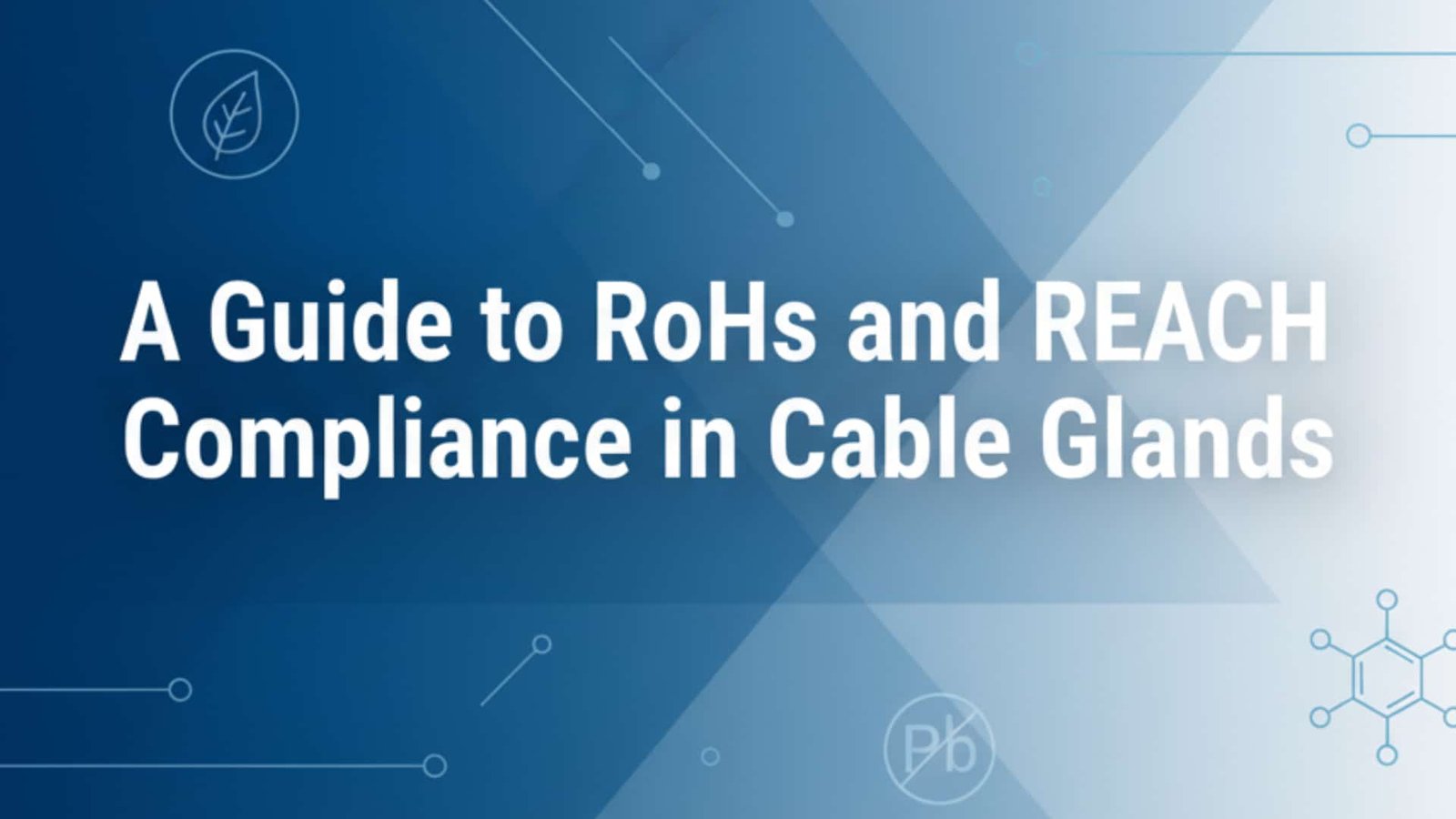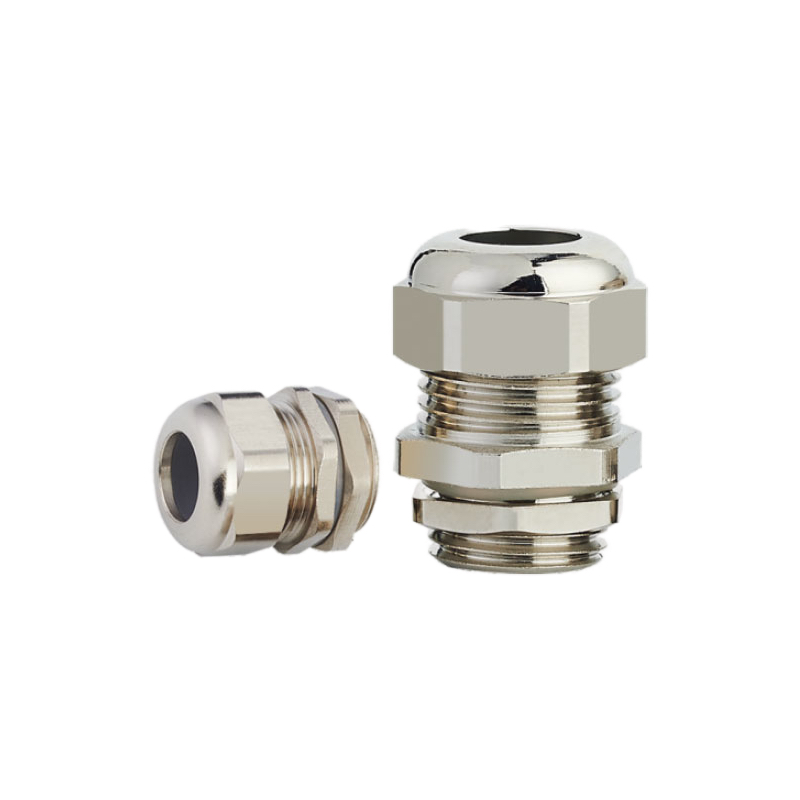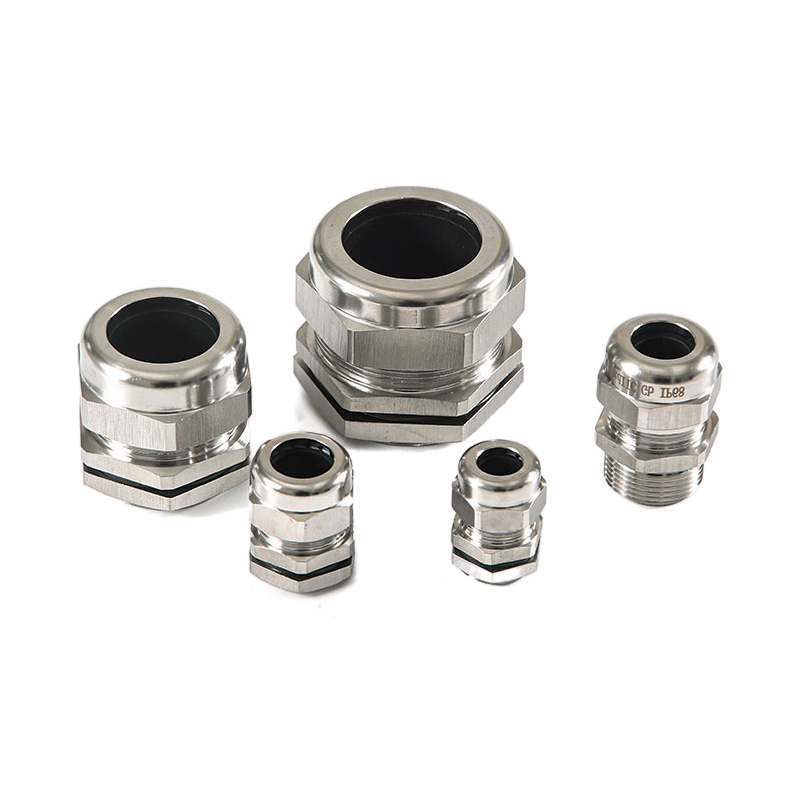
Regulatory compliance failures can devastate your business overnight. Just last month, a major European distributor faced €2.3 million in fines and complete product recalls due to non-compliant cable glands containing restricted substances. The cost of ignorance in today’s regulatory landscape is simply too high to ignore.
RoHS and REACH compliance in cable glands requires strict adherence to substance restrictions, comprehensive material declarations, and ongoing supply chain monitoring to ensure all components meet European Union safety and environmental standards. These regulations affect every cable gland sold in the EU market, with severe penalties for non-compliance.
I remember the panic in David’s voice when he called me from Manchester last year. His company had just received a compliance audit notice, and they discovered their cable gland supplier couldn’t provide proper RoHS documentation. With a £500,000 project on hold and potential legal exposure, David needed immediate solutions. That’s when we stepped in with our comprehensive compliance program 😉
Table of Contents
- What Are RoHS and REACH Regulations for Cable Glands?
- Which Substances Are Restricted in Cable Gland Manufacturing?
- How Do You Verify Cable Gland Compliance?
- What Are the Business Risks of Non-Compliance?
- How to Choose Compliant Cable Gland Suppliers?
- FAQs About RoHS and REACH Compliance
What Are RoHS and REACH Regulations for Cable Glands?
Understanding these critical regulations is the foundation of responsible cable gland procurement and manufacturing.
RoHS (Restriction of Hazardous Substances)1 limits specific toxic materials in electrical equipment, while REACH (Registration, Evaluation, Authorization of Chemicals)2 regulates chemical substances throughout the supply chain. Both regulations directly impact cable gland manufacturing, materials selection, and market access in the European Union.

RoHS Directive Overview
The RoHS Directive 2011/65/EU restricts the use of hazardous substances in electrical and electronic equipment (EEE). For cable glands, this means:
- Scope: All cable glands used in electrical installations within EU
- Enforcement: CE marking mandatory for compliance
- Penalties: Up to €50,000 per violation in some EU countries
- Updates: RoHS 3 (2015) expanded scope to include all electrical equipment
REACH Regulation Framework
REACH Regulation (EC) No 1907/2006 addresses chemical safety across all industries:
- Registration: Manufacturers must register chemical substances
- Evaluation: Authorities assess potential risks
- Authorization: High-concern substances require special permits
- Restriction: Banned or limited substances cannot be used
Cable Gland Specific Applications
Both regulations affect multiple cable gland components:
| Component | RoHS Impact | REACH Impact |
|---|---|---|
| Metal bodies (brass, steel) | Lead content restrictions | Nickel release limits |
| Sealing rings | Phthalate restrictions | SVHC substance declarations |
| Cable entries | Flame retardant limits | Chemical registration requirements |
| Threaded components | Hexavalent chromium prohibition | Coating substance evaluation |
At Bepto, we’ve invested heavily in compliance infrastructure. Our ISO9001 and IATF16949 certifications include specific procedures for RoHS and REACH compliance monitoring across our entire supply chain.
Which Substances Are Restricted in Cable Gland Manufacturing?
Knowing exactly which substances to avoid is crucial for maintaining compliance throughout your supply chain.
The primary restricted substances in cable glands include lead, mercury, cadmium, hexavalent chromium3, and specific flame retardants (PBB/PBDE), with concentration limits typically set at 0.1% by weight. REACH adds over 200 Substances of Very High Concern (SVHC)4 that require special handling and disclosure.
RoHS Restricted Substances Table
| Substance | Maximum Concentration | Common Cable Gland Sources | Health/Environmental Impact |
|---|---|---|---|
| Lead (Pb) | 0.1% (1000 ppm) | Brass alloys, soldering | Neurological damage, developmental issues |
| Mercury (Hg) | 0.1% (1000 ppm) | Switches, relays | Kidney damage, nervous system effects |
| Cadmium (Cd) | 0.01% (100 ppm) | Coatings, pigments | Cancer, kidney disease |
| Hexavalent Chromium (Cr6+) | 0.1% (1000 ppm) | Chrome plating, coatings | Cancer, respiratory issues |
| PBB/PBDE | 0.1% (1000 ppm) | Flame retardants in plastics | Endocrine disruption, developmental effects |
REACH Substances of Very High Concern
REACH’s SVHC list includes substances that may cause:
- Cancer (carcinogenic)
- Genetic mutations (mutagenic)
- Reproductive harm
- Persistent environmental accumulation
- Endocrine disruption
Material-Specific Compliance Challenges
Brass Cable Glands
Traditional brass alloys often contain lead for improved machinability:
- Challenge: Lead content typically 2-4% in standard brass
- Solution: Lead-free brass alloys (CW617N) with <0.1% lead
- Performance impact: Slightly reduced machinability, higher costs
Stainless Steel Components
While generally compliant, some treatments pose risks:
- Hexavalent chromium: Prohibited in surface treatments
- Nickel release: REACH restrictions on skin contact applications
- Solution: Passivation treatments using trivalent chromium
Polymer Sealing Elements
Elastomers and plastics face multiple restrictions:
- Phthalates: Restricted in many rubber compounds
- Flame retardants: PBB/PBDE prohibited, alternatives required
- Colorants: Cadmium-based pigments banned
David’s Manchester Success Story
Remember David from Manchester? His compliance crisis became a success story through systematic approach:
Initial Problem:
- 50,000 cable glands in inventory with questionable compliance
- Supplier couldn’t provide proper RoHS certificates
- Project deadline in 6 weeks with potential penalties
Our Solution:
- Emergency compliance audit of existing inventory
- Rapid testing of suspect materials using XRF analysis
- Replacement supply of certified compliant cable glands
- Implementation of ongoing compliance monitoring system
Results:
- 98% of inventory confirmed compliant after testing
- 2% non-compliant units replaced within 10 days
- Project completed on schedule with full compliance documentation
- David’s company now specifies Bepto for all cable gland requirements
How Do You Verify Cable Gland Compliance?
Proper verification requires systematic testing, documentation, and ongoing monitoring processes.
Cable gland compliance verification involves material testing using XRF5 or ICP analysis, supplier declarations, third-party certifications, and regular supply chain audits. The verification process must cover all components and materials throughout the manufacturing chain.
Testing Methods and Accuracy
X-Ray Fluorescence (XRF) Analysis
- Advantages: Fast, non-destructive, cost-effective screening
- Limitations: Surface analysis only, cannot detect organic compounds
- Accuracy: ±10-20% for most elements
- Applications: Initial screening of metal components
Inductively Coupled Plasma (ICP) Analysis
- Advantages: Highly accurate, detects trace elements
- Process: Requires sample destruction and laboratory analysis
- Accuracy: ±2-5% for most elements
- Applications: Definitive compliance verification
Organic Compound Testing
- Methods: GC-MS (Gas Chromatography-Mass Spectrometry)
- Applications: PBB/PBDE flame retardants, phthalates
- Complexity: Requires specialized laboratories
- Cost: Higher than elemental analysis
Documentation Requirements
Supplier Declarations
Essential documentation includes:
- Material composition reports for all components
- Test certificates from accredited laboratories
- Supply chain declarations covering sub-suppliers
- Process descriptions for surface treatments and coatings
Third-Party Certifications
Recognized certification bodies provide:
- RoHS compliance certificates with detailed test results
- REACH compliance statements including SVHC declarations
- ISO 17025 accredited test reports for legal validity
- Annual surveillance to maintain certification validity
Supply Chain Management
Supplier Qualification Process
- Initial assessment: Compliance capabilities and systems
- Documentation review: Existing certificates and procedures
- On-site audits: Manufacturing processes and controls
- Sample testing: Verification of compliance claims
- Ongoing monitoring: Regular updates and re-verification
Risk-Based Monitoring
Focus verification efforts on high-risk areas:
- New suppliers: Enhanced scrutiny and testing
- Material changes: Re-verification when specifications change
- Geographic risks: Increased monitoring for high-risk regions
- Historical issues: Enhanced oversight for previously non-compliant suppliers
What Are the Business Risks of Non-Compliance?
The financial and operational consequences of non-compliance extend far beyond simple fines.
Non-compliance risks include substantial financial penalties, product recalls, market access restrictions, legal liability, and severe damage to brand reputation. These consequences can threaten business survival, particularly for smaller companies with limited resources.
Financial Impact Analysis
Direct Costs
- Regulatory fines: €10,000-€50,000 per violation in most EU countries
- Product recalls: Average cost of €2-5 per unit plus logistics
- Testing and remediation: €50,000-200,000 for comprehensive programs
- Legal fees: €100,000+ for serious compliance violations
Indirect Costs
- Lost sales: Market access restrictions during remediation
- Customer penalties: Contractual damages for non-compliant deliveries
- Insurance impacts: Higher premiums or coverage exclusions
- Working capital: Inventory write-offs and replacement costs
Market Access Consequences
EU Market Restrictions
- Customs detention: Products held at borders pending compliance verification
- Distribution bans: Retailers refusing non-compliant products
- Tender exclusions: Public procurement restrictions
- Certification suspension: Loss of CE marking rights
Global Ripple Effects
- Other markets: Similar restrictions in countries adopting EU standards
- Customer requirements: Private sector compliance mandates
- Supply chain exclusion: Removal from approved vendor lists
- Competitive disadvantage: Loss of market position to compliant competitors
Real-World Case Study: Hassan’s Petrochemical Challenge
Hassan, operations director at a major petrochemical facility in Rotterdam, faced a compliance nightmare that nearly shut down his operation:
The Crisis:
- Routine inspection revealed non-compliant cable glands in hazardous areas
- 200+ glands required immediate replacement
- Plant shutdown costs: €100,000 per day
- Regulatory investigation threatened operating license
Emergency Response:
- Within 24 hours, we mobilized compliance-verified replacement glands
- Provided complete documentation package for regulatory authorities
- Implemented emergency installation procedures with certified technicians
- Established ongoing compliance monitoring system
Outcome:
- Plant resumed operations within 72 hours
- Regulatory investigation closed with minimal penalties
- Hassan’s facility became our reference site for compliance excellence
- Expanded relationship to cover all cable management products
How to Choose Compliant Cable Gland Suppliers?
Selecting the right supplier is your first and most important line of defense against compliance risks.
Choose cable gland suppliers with established compliance systems, comprehensive testing capabilities, transparent documentation, and proven track records in regulated markets. The supplier’s compliance infrastructure is as important as their manufacturing capabilities.
Supplier Evaluation Criteria
Compliance Infrastructure
Essential supplier capabilities include:
- Quality management systems: ISO9001 minimum, IATF16949 preferred
- Testing facilities: In-house or contracted analytical capabilities
- Documentation systems: Comprehensive material traceability
- Training programs: Staff education on regulatory requirements
Certification and Accreditation
Look for suppliers with:
- Third-party certifications: RoHS and REACH compliance certificates
- Laboratory accreditation: ISO 17025 for testing facilities
- Industry certifications: Relevant sector-specific qualifications
- Regular audits: Annual surveillance and re-certification
Supply Chain Transparency
Evaluate supplier’s upstream management:
- Sub-supplier control: Qualification and monitoring procedures
- Material sourcing: Geographic and supplier diversity
- Change management: Notification procedures for material changes
- Risk assessment: Proactive identification of compliance risks
Due Diligence Process
Initial Assessment
- Compliance questionnaire: Detailed capability assessment
- Certificate review: Verification of existing certifications
- Reference checks: Customer feedback on compliance performance
- Financial stability: Ability to invest in compliance infrastructure
On-Site Evaluation
Conduct thorough facility audits covering:
- Manufacturing processes: Understanding of material flows
- Quality control: Testing procedures and equipment
- Documentation systems: Record keeping and traceability
- Staff competency: Training and knowledge levels
Ongoing Monitoring
Maintain supplier performance through:
- Regular reviews: Quarterly compliance updates
- Performance metrics: Compliance KPIs and scorecards
- Audit programs: Annual on-site assessments
- Market intelligence: Monitoring regulatory changes and impacts
Red Flags to Avoid
Warning Signs
Be cautious of suppliers who:
- Cannot provide certificates: Lack of proper documentation
- Offer significantly lower prices: Potential cost-cutting on compliance
- Resist audits: Unwillingness to demonstrate compliance
- Have frequent material changes: Unstable supply chain management
- Lack testing capabilities: No verification of compliance claims
Geographic Considerations
Higher risk regions may require enhanced scrutiny:
- Emerging markets: Less developed regulatory infrastructure
- Low-cost regions: Economic pressure to cut compliance corners
- Remote locations: Limited access to testing facilities
- Regulatory gaps: Inconsistent enforcement of standards
Bepto’s Compliance Advantage
At Bepto, we’ve built compliance into our core business model:
Our Compliance Infrastructure:
- Dedicated compliance team: Full-time specialists monitoring regulations
- Advanced testing: In-house XRF analysis plus contracted ICP testing
- Supply chain control: Direct relationships with raw material suppliers
- Documentation systems: Complete traceability from raw materials to finished products
- Continuous monitoring: Regular testing and supplier audits
Customer Benefits:
- Risk mitigation: Comprehensive compliance documentation
- Cost savings: Avoid penalties and recalls through prevention
- Market access: Confident entry into regulated markets
- Peace of mind: Focus on your business while we handle compliance
Conclusion
RoHS and REACH compliance in cable glands is not optional—it’s a business imperative that requires systematic approach, reliable suppliers, and ongoing vigilance. The costs of non-compliance far exceed the investment in proper compliance programs, making prevention the only viable strategy. At Bepto, we understand that compliance is not just about meeting regulations; it’s about protecting your business, your customers, and the environment. Our comprehensive compliance program, backed by rigorous testing and documentation, ensures that every cable gland we supply meets or exceeds all applicable standards. When you choose Bepto, you’re not just buying cable glands—you’re investing in compliance confidence and business protection.
FAQs About RoHS and REACH Compliance
Q: What’s the difference between RoHS and REACH compliance for cable glands?
A: RoHS restricts specific hazardous substances in electrical equipment (lead, mercury, cadmium, etc.) while REACH regulates all chemical substances throughout the supply chain. Cable glands must comply with both regulations when sold in theS the EU market.
Q: How often should I test my cable glands for compliance?
A: Test initially when qualifying new suppliers, then annually for routine monitoring, and immediately when any material or supplier changes occur. High-risk applications may require more frequent testing every 6 months.
Q: Can I rely on supplier certificates for compliance verification?
A: Supplier certificates are essential but should be verified through independent testing, especially for new suppliers. Use certificates as primary documentation but conduct spot testing to verify accuracy and maintain compliance confidence.
Q: What happens if my cable glands fail compliance testing?
A: Immediately stop using non-compliant products, notify customers, conduct risk assessment for installed products, and work with suppliers to identify root causes. You may need to recall products and implement corrective actions to prevent recurrence.
Q: Are there any exemptions for cable glands under RoHS?
A: Very limited exemptions exist for specific applications like high-temperature soldering or specialized alloys. Most standard cable gland applications have no exemptions and must fully comply with all substance restrictions.
-
Learn about the EU’s RoHS directive, which restricts specific hazardous materials in electrical equipment. ↩
-
Explore the official REACH regulation, an EU framework for registering and managing chemical substances. ↩
-
Understand the health and environmental risks associated with Hexavalent Chromium, a restricted substance. ↩
-
See the official Candidate List of Substances of Very High Concern (SVHC) that require authorization under REACH. ↩
-
Discover the principles of X-Ray Fluorescence (XRF), a non-destructive method for elemental material analysis. ↩




